With elections looming in June, it’s worthwhile looking at the structure of the European Parliament.
Ireland’s three constituencies will elect 14 MEPs this time round, out of a total of 750 MEPs.
As I stressed in last weekend’s Long Read, Ireland has long punched above its weight in terms of influence within the parliament.
This is in part due to how our representatives align themselves. The European Parliament awards speaking time and committee membership based on the strength of each grouping.
A non-aligned or independent MEP finds themselves very much in the slow lane. A grouping must have a minimum of 25 MEPs top be valid. Of the 705 current MEPs, 656 are aligned to one or other of the six current groupings.

European Parliament in Strasbourg.
For context, there are eight political parties in Dáil Éireann - Fianna Fáil, Sinn Féin, Fine Gael, Green Party, Labour, Social Democrats, People Before Profit/Solidarity, Independent Ireland, Áontú and Right to Change Ireland.
Furthermore, there are three political groupings in the Dáil, populated by the 21 independent TDs and the smallest parties (the last three named).
With this in mind, we can see that the six political groupings in the European Parliament form a relatively compact political structure, particularly considering the 27 very different member states encompassed within the EU.
The following is a short look at them, what, if any Irish representation they command, and where on the political spectrum they sit.
European Peoples Party (EPP) -178 MEPs
Affiliated Irish party - Fine Gael
Current Irish MEPs - Five: Deirdre Clune, Frances Fitzgerald, Sean Kelly, Colm Markey, Maria Walsh.
A centre-right Christian democrat party, which has been the largest political grouping in the parliament for decades. Fine Gael has been associated with the EPP since Ireland joined the EEC in 1973.
Progressive Alliance of Socialists and Democrats (S&D) -141 MEPs
Affiliated Irish party - Labour
Current Irish MEPs - none.
A left-of-centre party, which has been in operation since 1953. The socialists are perhaps the most homogonous political grouping in the parliament, in that they are comprised of identifiable socialist parties, most of long standing. The Irish Labour party has been aligned with this grouping since Ireland joined the EEC in 1973.
Renew Europe - 101 MEPs
Affiliated Irish Party - Fianna Fáil
Current Irish MEPs - Two: Chris Andrews, Billy Kelleher.
Renew is the successor to the Alliance of Liberals and Democrats for Europe (ALDE). They are centre-right, in the classic liberal tradition.
Fianna Fáil has been members since 2009. Prior to that, it was aligned with the French Gaullists, first in in the European Progressive Democrats (1979-1984), which then morphed into the European Democratic Alliance. I wonder if that’s where Dessie O’Malley got the name from?
Fianna Fáil then was in the UEN for a decade from 1999, a rather uncomfortable home for them, as UEN became Eurosceptic. To further complicate matters, Fianna Fáil MEP Brian Crowley in 2014 quit ALDE to join the ECR, which led to him losing the Fianna Fáil party whip.
Greens-European Free Alliance (Greens-EFA) - 71 MEPs
Affiliated Irish parties - Green Party
Current Irish MEPs - Two: Ciaran Cuffe, Grace O’Sullivan.
Formed in 1999, the Greens have been growing in strength and widening their reach right across the EU. The Irish Green Party, having gained two MEPs in 1999, has been there since this grouping’s beginnings.
European Conservatives and Reform group (ECR) - 67 MEPs
Affiliated Irish parties - none
Current Irish MEPs - none
The ECR was founded by David Cameron to provide an anti-federal voice within the European Parliament for the British Conservatives. Their 67 MEPs now have a heavy Polish representation (24) and the politics of the grouping has moved steadily rightwards.
While no Irish party is aligned to the ECR, Richard O’Donoghue and Michael Collins, who have since founded Independent Ireland, both attended their recent conference on agriculture held in Kilkenny, as did Mattie McGrath and Senator Sharon Keoghan.
Identity and Democracy (ID) - 58 MEPs
Affiliated Irish parties - none
Number of Irish MEPs - none
Identity and Democracy are a group of MEPs, many of whom would like to pull the EU asunder. A mix of Eurosceptics and right-wing nationalists, ID are to the right of the ECR and represent one edge of the political spectrum within European politics. There currently are no Irish parties or MEPs aligned to ID.
The Left in the European Parliament (GUE/NGL) - 38 MEPs
Affiliated Irish parties - Sinn Féin, Independents for Change
Irish MEPs - Five: Chris Andrews, Clare Daly, Luke ‘Ming’ Flanagan, Chris McManus, Mick Wallace.
The Left in The European Parliament hardly rolls off the tongue - it sounds more like a 70s prog-rock album title, whereas a political party is more likely to want a band name-type name.
EUL-NGL is an abbreviation of European United Left/Nordic Green Left, so little help there either. Sinn Féin has been members since the election of its first MEPs in 2004. Independents For Change MEPs Clare Daly and Mick Wallace joined following their election in 2019, as did Independent politician Luke ‘Ming’ Flanagan.
Non-aligned members - 51 MEPs
Affiliated Irish parties - none
Irish MEPs - none
This remaining ‘group’ is actually not a group, but the classification of MEPs not aligned to any of the six groups above. The MEPs who are unaligned miss out on many of the opportunities presented by the parliamentary process. Most come from the extremes of the political spectrum.
How the parliament works
Typically, the way the process works is that the relevant parliamentary committee decides to consider an issue or a legislative proposal from the Commission. There are a total of 22 committees, ranging from agriculture and rural development and environment to public health, foreign affairs and budgets.
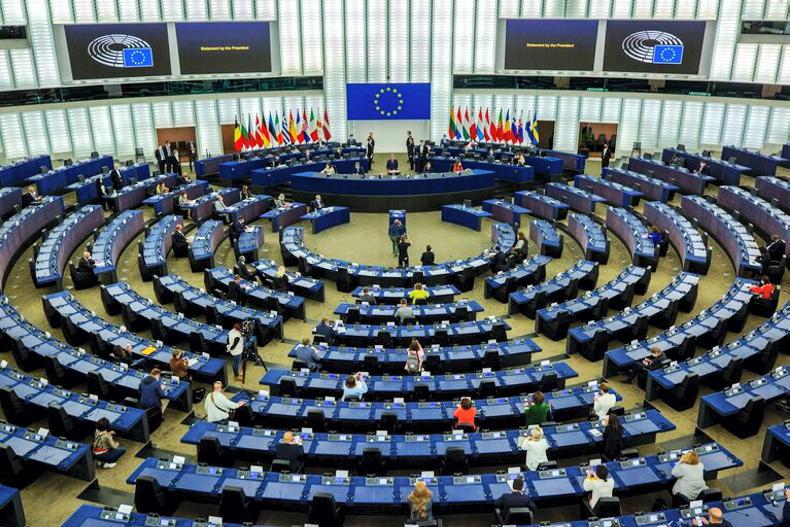
The parliamentary chamber in Strasbourg.
The committee selects a rapporteur, who then produces a report, which is essentially a draft legislative proposal.
Each other grouping on the committee can select a shadow rapporteur, who will pay close attention to the work of the rapporteur and will draft amendments for the committee’s consideration.
The committee then votes on every proposal and every amendment, resulting in the production of a final document to be voted on by the full parliament.
Balance of power shifting
The EPP has long been the centre-right powerhouse within the European Union. While the EPP is still the largest grouping in the current parliament and the socialists are still the second-largest, they no longer control a majority between them.
That duopoly previously meant if the EPP could broker an agreement with the S&D on any issue (or vice versa), they had the combined numbers on the various committees and in the parliament itself to ensure that proposal’s safe passage through the legislative process.
It’s now a more complicated parliament, with significant bodies of opinion well to the left and right of centre. This can lead to confusing situations.
Mairead McGuinness, in her recent Michael Dillon lecture, spoke of a “coalition of the unlikely”, where the left and right can combine to outvote the centre.
A recent example was the sustainable use regulation relating to pesticides, with the right voting against it as going too far and the left/green wing voting against it because it didn’t go far enough. As a result, the regulation was voted down and we’re back to the drawing board.
With elections looming in June, it’s worthwhile looking at the structure of the European Parliament.
Ireland’s three constituencies will elect 14 MEPs this time round, out of a total of 750 MEPs.
As I stressed in last weekend’s Long Read, Ireland has long punched above its weight in terms of influence within the parliament.
This is in part due to how our representatives align themselves. The European Parliament awards speaking time and committee membership based on the strength of each grouping.
A non-aligned or independent MEP finds themselves very much in the slow lane. A grouping must have a minimum of 25 MEPs top be valid. Of the 705 current MEPs, 656 are aligned to one or other of the six current groupings.

European Parliament in Strasbourg.
For context, there are eight political parties in Dáil Éireann - Fianna Fáil, Sinn Féin, Fine Gael, Green Party, Labour, Social Democrats, People Before Profit/Solidarity, Independent Ireland, Áontú and Right to Change Ireland.
Furthermore, there are three political groupings in the Dáil, populated by the 21 independent TDs and the smallest parties (the last three named).
With this in mind, we can see that the six political groupings in the European Parliament form a relatively compact political structure, particularly considering the 27 very different member states encompassed within the EU.
The following is a short look at them, what, if any Irish representation they command, and where on the political spectrum they sit.
European Peoples Party (EPP) -178 MEPs
Affiliated Irish party - Fine Gael
Current Irish MEPs - Five: Deirdre Clune, Frances Fitzgerald, Sean Kelly, Colm Markey, Maria Walsh.
A centre-right Christian democrat party, which has been the largest political grouping in the parliament for decades. Fine Gael has been associated with the EPP since Ireland joined the EEC in 1973.
Progressive Alliance of Socialists and Democrats (S&D) -141 MEPs
Affiliated Irish party - Labour
Current Irish MEPs - none.
A left-of-centre party, which has been in operation since 1953. The socialists are perhaps the most homogonous political grouping in the parliament, in that they are comprised of identifiable socialist parties, most of long standing. The Irish Labour party has been aligned with this grouping since Ireland joined the EEC in 1973.
Renew Europe - 101 MEPs
Affiliated Irish Party - Fianna Fáil
Current Irish MEPs - Two: Chris Andrews, Billy Kelleher.
Renew is the successor to the Alliance of Liberals and Democrats for Europe (ALDE). They are centre-right, in the classic liberal tradition.
Fianna Fáil has been members since 2009. Prior to that, it was aligned with the French Gaullists, first in in the European Progressive Democrats (1979-1984), which then morphed into the European Democratic Alliance. I wonder if that’s where Dessie O’Malley got the name from?
Fianna Fáil then was in the UEN for a decade from 1999, a rather uncomfortable home for them, as UEN became Eurosceptic. To further complicate matters, Fianna Fáil MEP Brian Crowley in 2014 quit ALDE to join the ECR, which led to him losing the Fianna Fáil party whip.
Greens-European Free Alliance (Greens-EFA) - 71 MEPs
Affiliated Irish parties - Green Party
Current Irish MEPs - Two: Ciaran Cuffe, Grace O’Sullivan.
Formed in 1999, the Greens have been growing in strength and widening their reach right across the EU. The Irish Green Party, having gained two MEPs in 1999, has been there since this grouping’s beginnings.
European Conservatives and Reform group (ECR) - 67 MEPs
Affiliated Irish parties - none
Current Irish MEPs - none
The ECR was founded by David Cameron to provide an anti-federal voice within the European Parliament for the British Conservatives. Their 67 MEPs now have a heavy Polish representation (24) and the politics of the grouping has moved steadily rightwards.
While no Irish party is aligned to the ECR, Richard O’Donoghue and Michael Collins, who have since founded Independent Ireland, both attended their recent conference on agriculture held in Kilkenny, as did Mattie McGrath and Senator Sharon Keoghan.
Identity and Democracy (ID) - 58 MEPs
Affiliated Irish parties - none
Number of Irish MEPs - none
Identity and Democracy are a group of MEPs, many of whom would like to pull the EU asunder. A mix of Eurosceptics and right-wing nationalists, ID are to the right of the ECR and represent one edge of the political spectrum within European politics. There currently are no Irish parties or MEPs aligned to ID.
The Left in the European Parliament (GUE/NGL) - 38 MEPs
Affiliated Irish parties - Sinn Féin, Independents for Change
Irish MEPs - Five: Chris Andrews, Clare Daly, Luke ‘Ming’ Flanagan, Chris McManus, Mick Wallace.
The Left in The European Parliament hardly rolls off the tongue - it sounds more like a 70s prog-rock album title, whereas a political party is more likely to want a band name-type name.
EUL-NGL is an abbreviation of European United Left/Nordic Green Left, so little help there either. Sinn Féin has been members since the election of its first MEPs in 2004. Independents For Change MEPs Clare Daly and Mick Wallace joined following their election in 2019, as did Independent politician Luke ‘Ming’ Flanagan.
Non-aligned members - 51 MEPs
Affiliated Irish parties - none
Irish MEPs - none
This remaining ‘group’ is actually not a group, but the classification of MEPs not aligned to any of the six groups above. The MEPs who are unaligned miss out on many of the opportunities presented by the parliamentary process. Most come from the extremes of the political spectrum.
How the parliament works
Typically, the way the process works is that the relevant parliamentary committee decides to consider an issue or a legislative proposal from the Commission. There are a total of 22 committees, ranging from agriculture and rural development and environment to public health, foreign affairs and budgets.

The parliamentary chamber in Strasbourg.
The committee selects a rapporteur, who then produces a report, which is essentially a draft legislative proposal.
Each other grouping on the committee can select a shadow rapporteur, who will pay close attention to the work of the rapporteur and will draft amendments for the committee’s consideration.
The committee then votes on every proposal and every amendment, resulting in the production of a final document to be voted on by the full parliament.
Balance of power shifting
The EPP has long been the centre-right powerhouse within the European Union. While the EPP is still the largest grouping in the current parliament and the socialists are still the second-largest, they no longer control a majority between them.
That duopoly previously meant if the EPP could broker an agreement with the S&D on any issue (or vice versa), they had the combined numbers on the various committees and in the parliament itself to ensure that proposal’s safe passage through the legislative process.
It’s now a more complicated parliament, with significant bodies of opinion well to the left and right of centre. This can lead to confusing situations.
Mairead McGuinness, in her recent Michael Dillon lecture, spoke of a “coalition of the unlikely”, where the left and right can combine to outvote the centre.
A recent example was the sustainable use regulation relating to pesticides, with the right voting against it as going too far and the left/green wing voting against it because it didn’t go far enough. As a result, the regulation was voted down and we’re back to the drawing board.






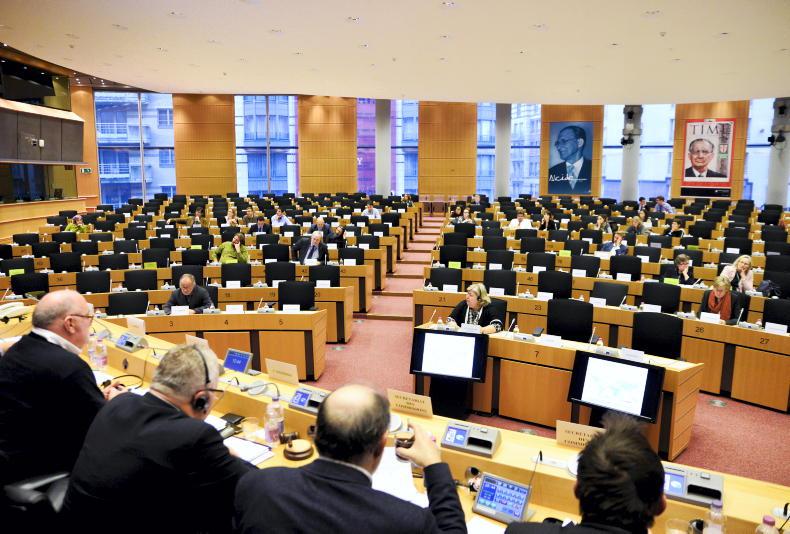

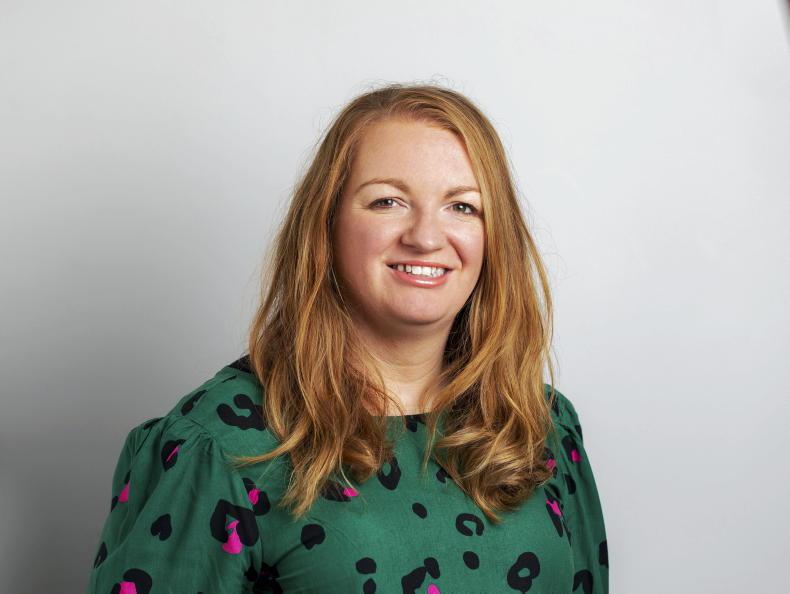
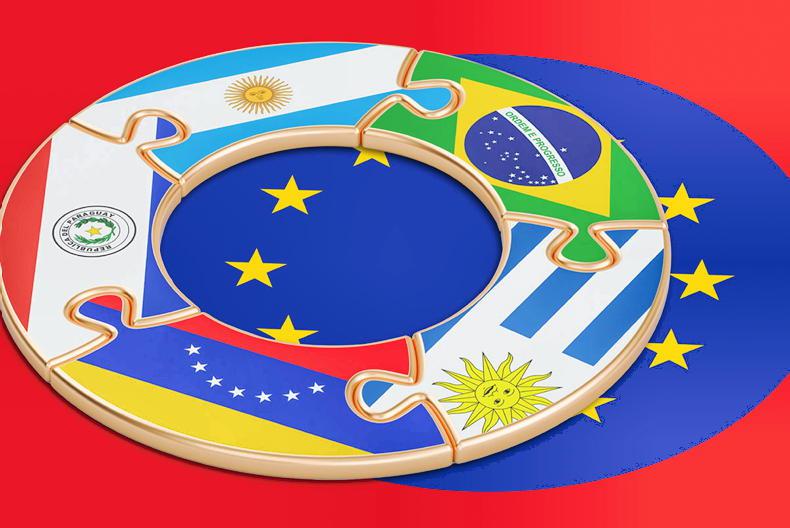
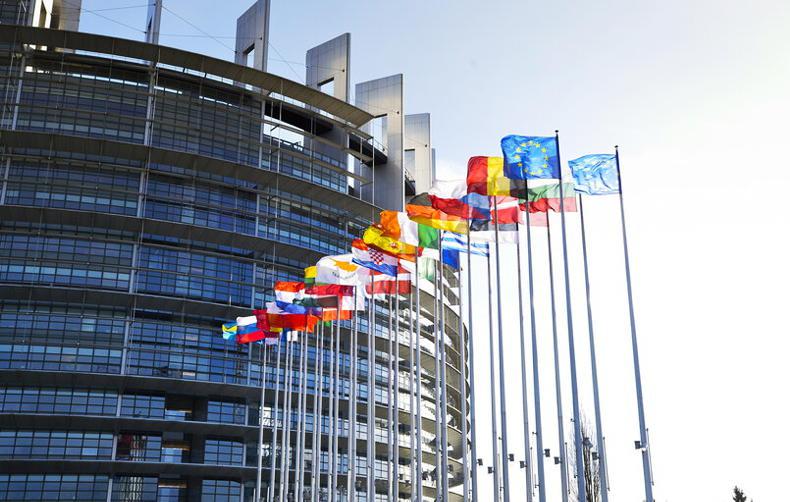
SHARING OPTIONS